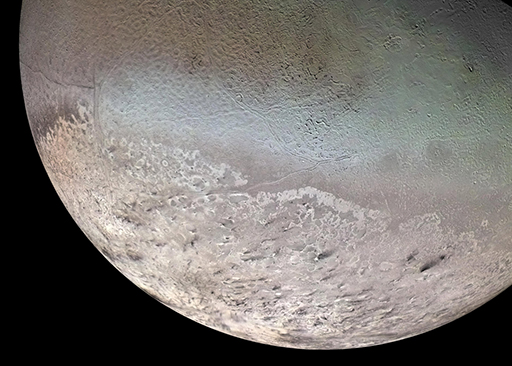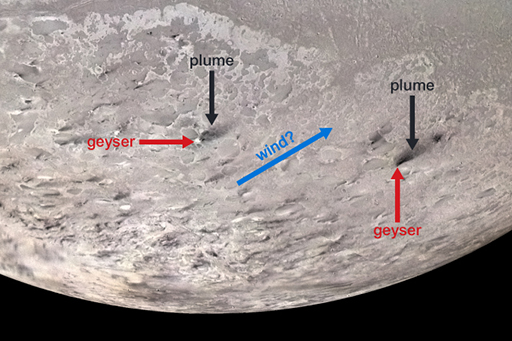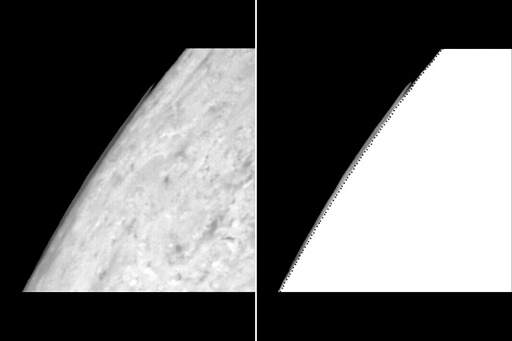2.6 A look at Triton
The southern terrain is pinkish and hummocky (Figure 20). North of this is a greenish terrain with a texture similar to the skin of a cantaloupe melon, where the landscape may be the product of cryovolcanic eruptions. The pinkish material is a polar cap predominantly of frozen nitrogen. The green material is thought to be mostly methane or carbon dioxide-ice, which constitutes the upper part of Triton’s surface crust, with a veneer of nitrogen-frost coating the ground. Changes in atmospheric pressure have been detected on Triton as a result of the seasons, as nitrogen frost turns to vapour.
The dark smears on the pinkish terrain (seen in Figure 21) are thought to be deposits from plumes from geysers that erupted from below the polar ice cap, some of them active during the Voyager 2 flyby. These may be solar-powered geysers. If that is correct, sunlight shines through the ice and warms the dark dusty substrate below. The absorbed heat vaporises the base of the nitrogen-ice, creating a pressured blister, which then bursts, ejecting nitrogen and dust.
To many people’s surprise, when New Horizons flew past Pluto in 2015, its landscape (part of which was imaged in more detail than Voyager had managed at Triton) bore little resemblance to Triton, despite their broadly similar bulk compositions.



